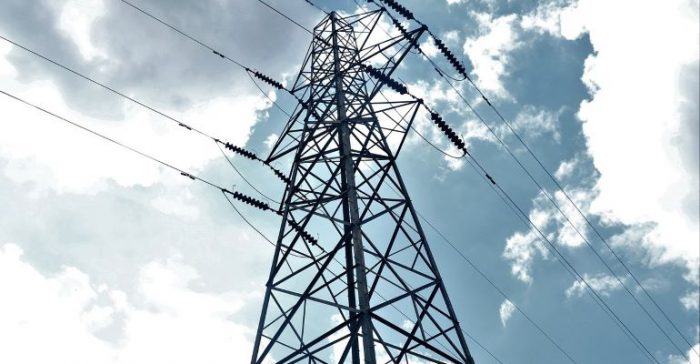Steve Baab, DNV, 10/21/2021
Here at DNV, we have a unique understanding of the energy transition, which is of strategic importance to us as well as our customers. It is our fervent belief that the energy industry can and must take the lead in driving the energy transition. We discussed the hurdles with a diverse group of experts across the DNV Energy Systems teams and issued a challenge: Convince me that the energy transition is possible.
To advance decarbonization and the energy transition, the traditional utility business model must evolve to prioritize electrification. Find out how.
Climate change takes center stage as one of the most urgent issues facing the world. And as Nick Brod stresses in his Energy transition “convince me” series kickoff article, utilities play a leading role in solving this challenge. However, shifting away from fossil fuels and accelerating decarbonization is easier said than done since the traditional utility business model is driven chiefly by commodity sales, not decarbonization.
In this article, I’ll explore how utilities must evolve their business models to focus on vital electrification opportunities to advance the energy transition. I’ll also discuss the need for utilities to partner closely with regulators to advance governance, decouple profit from commodity sales, and support customers through the energy transition.
The traditional utility business model is at odds with decarbonization
Developing strategies to increase electric load, decrease fossil fuels, and reduce carbon is a relatively new approach for utilities. The regulatory framework in place for decades has emphasized service reliability, prudent rate structures, and customer service requirements. This framework has shaped the way that utilities operate.
In the traditional utility business model, operations and maintenance and capital spend dictate revenue requirements, including the recovery of fixed costs through commodity sales. Customer rates align to revenue requirements and recouping a rate of return on prudent spend that regulators and shareholders deem acceptable. As a result, most utilities have prioritized sound operational practices, cost controls, and efficient customer satisfaction strategies over decarbonization.
Therein lies one of the key obstacles. Traditional regulatory frameworks reward utilities for increasing energy sales. Meanwhile, capital expenditures, such as infrastructure upgrades that support decarbonization, can pose huge financial risks for utilities due to unpredictable customer behaviors and fluctuations in policy and regulatory requirements. If a utility shifts customer load significantly, the utility risks capital investments being disallowed by regulators.
What needs to change to support electrification
As detailed by Annie Koch in her recent article, To accelerate electrification, energy regulations must evolve, existing regulatory frameworks are often ambiguous and unpredictable and fail to factor in the social benefits and costs to communities.
For utilities to advance electrification, the regulatory frameworks that dictate how utilities operate must also evolve. Regulators must encourage utility business models that decouple profit from commodity sales and reward utilities for energy efficiency and reducing carbon. To accomplish this, utilities must work with their regulatory governance to develop both investment and rate structure guidance that prioritizes the energy transition.
Regulations must be clear, consistent, and certain—meaning that guidance and expectations must be highly predictable, and in place for substantial time periods. Utilities cannot afford the risks associated with short-term regulatory mandates that expire or that ebb with political tides. The targets must be clear-cut and achievable—and they must address how populations are impacted to help ensure greater equity.
How utilities can support the transition
The need for utilities to develop both short- and long-range carbon-neutral plans will become increasingly prevalent. Many of those plans involve supply-side solutions which are much easier for a utility to control. Utilities also need to engage legislative stakeholders in conversations to move the decarbonization rock forward.
Additionally, utilities need to support customers through this transition. As customers shift from fossil fuels to electrification, costs will increase. To manage this, some utilities have implemented heating and hot water structures that reward the use of electricity.
Yet, even with all-electric rates, utilities can struggle to compete against standard natural gas rates. But this disparity will not last. As renewable energy generation costs decline, they are becoming more cost effective than todays’ fossil fuel technologies. According to the International Renewable Energy Agency (IRENA), in the last ten years, the costs of photovoltaic solar declined by 82% and onshore wind dropped by 39%. In fact, IRENA estimates that replacing the costliest 500 GW of coal with these two technologies would cut annual power costs by $23 billion and emissions by 1.8 gigatons. DNV has a deep and balanced perspective on the relationship between fossil and non-fossil sources of energy and has been tracking these advancements in the Energy Transition Outlook reports.
As energy regulations evolve, we’re seeing utilities adapt their business models and commit to the energy transition. In response to New York’s climate targets and clean energy requirements, Consolidated Edison (ConEd) recently announced plans to triple their investment in energy efficiency by 2030. They’re committing $1.7 billion to increase energy efficiency savings, with energy efficiency programs expected to double between 2019 and 2025. They are also actively evaluating options for transitioning their natural gas system to renewable sources and are committed to advancing electrification programs.
As the need to combat climate change escalates, utilities and regulators must take swift action to accelerate decarbonization by encouraging electrification and reducing fossil fuel use on both the supply and demand side of the business. I urge utilities and regulators to work together to modernize business models and help build a cleaner, more equitable economy that rewards electrification and decouples profits from commodity sales.

